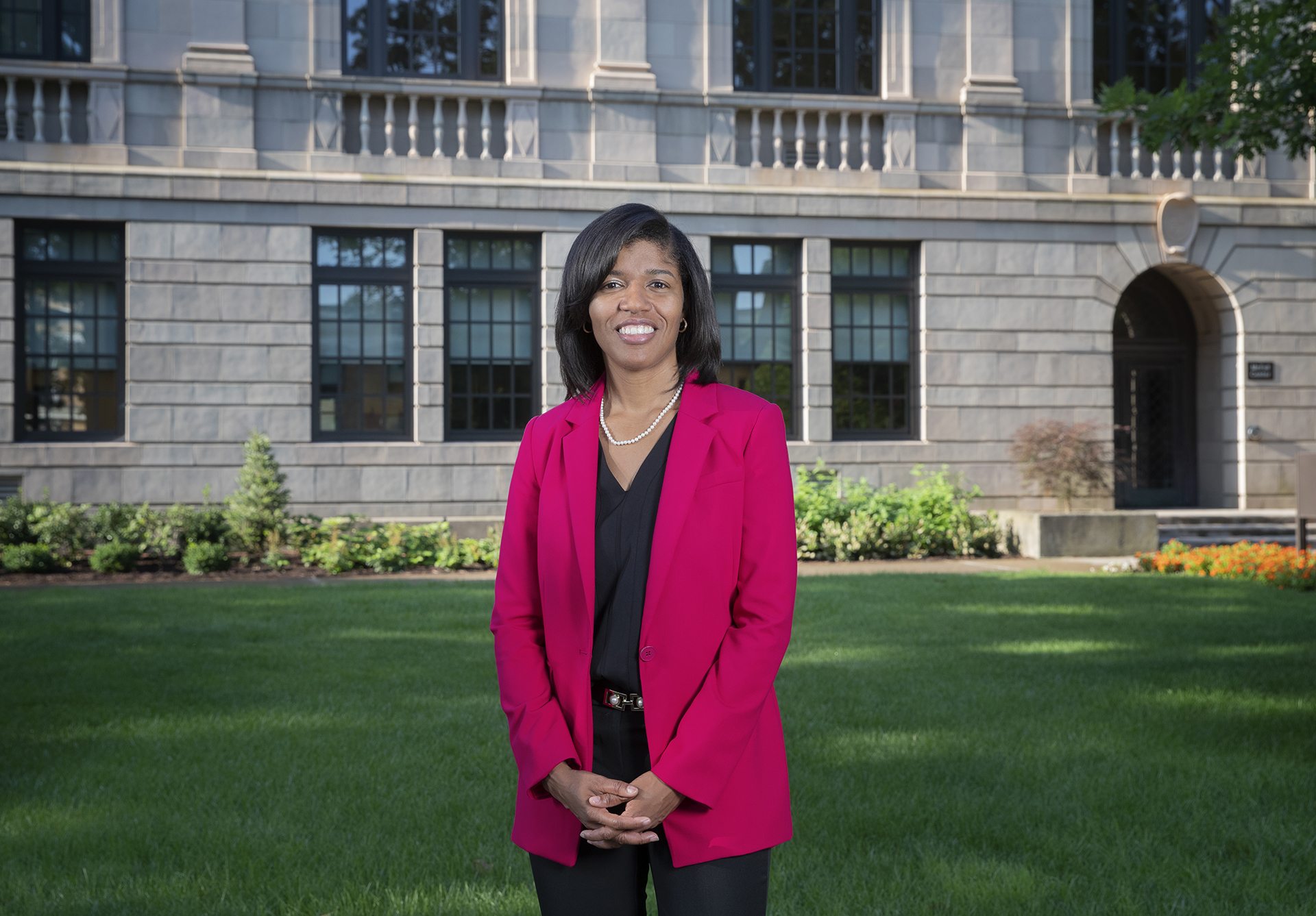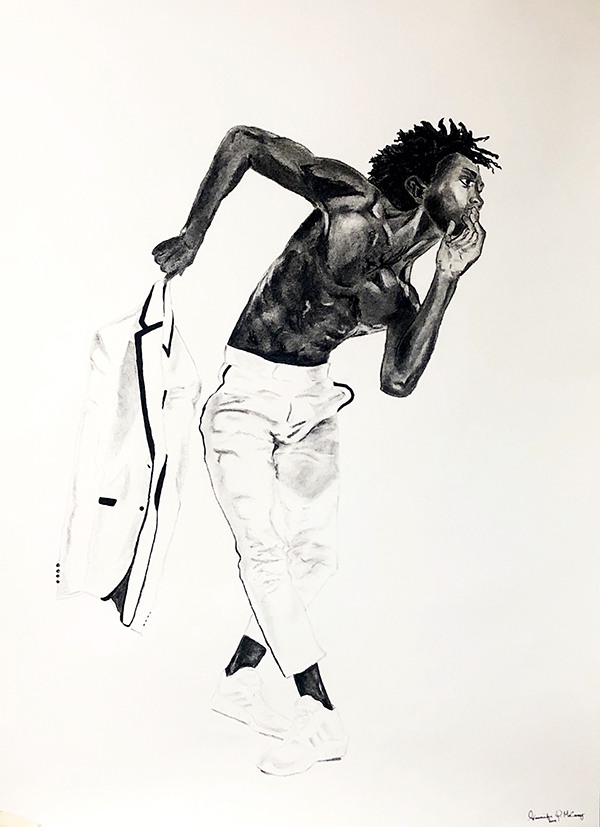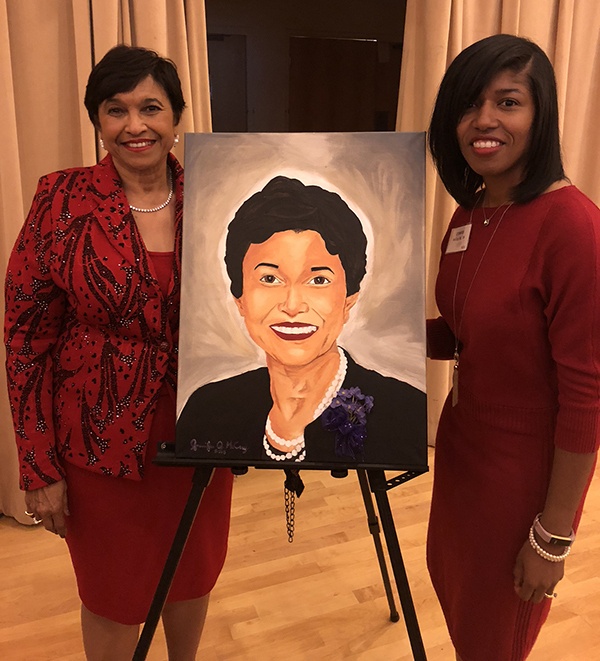

Get to know Jennifer McCary, BGSU's chief diversity and belonging officer
Diversity and Belonging Comprehensive Strategy and Plan
As a public university for the public good, our bedrock commitment to diversity and belonging requires mutual respect, understanding, and valuing individuals to facilitate a more diverse and inclusive environment so all can belong.
Within our community, the diversity of identities and life experiences determines how we perceive and contribute to society. We acknowledge that diversity has not always been understood or embraced in our society. Yet, at Bowling Green State University, we will strive to understand and embrace diversity by breaking down barriers to meaningful participation to ensure that individuals are treated with dignity. Today, on Juneteenth, the University introduces the new Comprehensive Strategy and Plan from its Division of Diversity and Belonging. As a public university for the public good, our bedrock commitment to diversity and belonging requires mutual respect, understanding and valuing individuals to facilitate a more diverse and inclusive environment so all can belong.
University's Division of Diversity and Belonging promotes a campus climate that fosters an inclusive environment for all
By Amber Stark '99
When Jennifer McCary '05, '08 joined Bowling Green State University in 2017 in the University’s newly created assistant vice president for student affairs/Title IX officer role it was a homecoming. A 2008 BGSU graduate of the College Student Personnel master’s program, she also received her undergraduate fine arts degree from the University.
McCary served as associate dean for violence prevention and resolution, Title IX coordinator and director of the Women’s Center in the Dean of Students office at Gettysburg College in Pennsylvania before joining BGSU.
In 2019, McCary’s role expanded, to chief diversity and belonging officer, as the University reaffirmed its commitment to embody the ideal that by empowering and supporting all people, they can achieve excellence. Shortly after, the Division of Diversity and Belonging was created to build a campus climate that fosters an inclusive environment that promotes and nurtures diversity, empowers and supports people, and builds a community where all are welcomed, valued and affirmed.
We sat down with McCary earlier this year to learn more about her and her goals for the University.
When you were a kid, what did you want to be when you grew up?
I wanted to either be the next Bob Ross or a landscape architect.
You have two degrees from BGSU. Why did you pick BGSU – twice?
I had two friends who were students at BGSU. They talked about the University all the time, so I came to visit them. While I was on campus, I met some great people, I was captivated by the public art displays, and I enjoyed the social activities. When I left, I decided to submit an application. I actually forgot to tell my parents, so when it came time for me to leave for my orientation, they were stunned. Like the loving parents they are, they drove me to campus and helped me unpack my belongings, but I still have not lived down that surprise.
During undergrad, I was an RA, a leader in Greek Life, a student worker for Conference Programs, and involved a number of other activities that made my supervisor tell me that I should consider the College Student Personnel program. The national reputation of this program is what drew me back to BGSU only one year after completing undergrad.

A black and white charcoal drawing of a man holding a suit jacket and leaning into a dance pose.
Your undergraduate focus was on stone sculpture; what is that?
Stone sculptures are three-dimensional artwork that are a labor of love. For me, sculpting with stone is a process that involves having a vision for the finished piece before getting started. This helps with laying out your time, selecting the materials, knowing what tools you will want to use, and knowing how to correct any mistake you make along the way. My favorite professor when I was in undergrad was Shawn Morin. Professor Morin is still at BGSU and I will never forget how my journey with stone started with him.
I was an art education major and needed an elective. Since I was sculpting in most of my ceramics classes, I thought that intro to carving would be a good elective. The first day of class, we’re all sitting around a large wooden table. Professor Morin walks in and hurls a piece of limestone on top of the table and tells us limestone would be our first material. After class, I told him that the course description didn’t quite match his description of what our semester would entail. I shared that I was unsure that I could work with such a challenging material. I am so grateful that he told me to stay in the class and give it a try for a couple of weeks before I made up my mind. Thanks to his instruction and mentorship, I would go on to study sculpture. I continued in his courses even through graduate school.
How did you get from art education to Title IX and sexual assault prevention and education?
After teaching for a brief stint, I realized that teaching 7th and 8th graders was not one of my strengths. So I returned to school to pursue a master’s degree. I love working with college-aged students. So the CSP program was perfect for me. My graduate assistantship was with the Office of Residence Life as a graduate hall director in Founders Hall. I was able to handle low-level conduct cases and I realized that this was the functional area I wanted to pursue. When I graduated, I took a job at John Carroll University in University Heights, Ohio, as an area coordinator for Murphy Hall. The assistant dean of students knew my interest in conduct and allowed me to serve as the co-chair for the University Conduct Board. JCU was the first place that I started responding to Title IX reports.
I was only at JCU for one year before taking a job as the assistant director for Student Life at Loyola University Maryland in Baltimore. There, I oversaw a large residential area consisting of four buildings with all class years represented. I worked closely with the associate director for Student Conduct and it was there that I started taking on suspension and expulsion level conduct cases, and getting the chance to work more closely with Title IX cases as well. While I was at Loyola, I created a Social Justice Learning Community and taught a class on Social Justice in Film and Media. I could have stayed on that campus forever, but as fate would have it, someone at Loyola nominated me for the director of Student Rights and Responsibilities position at Gettysburg College in Gettysburg. Given that conduct is what I loved, and this position served as the deputy Title IX coordinator for students, I took the job. Little did I know that I would spend the next six and a half years there in various roles. I had an hour-and-20-minute commute each way still living in Baltimore, but it was perfect because it gave me time to decompress some of the most difficult situations before getting to my family.
I started as the director of SRR and Title IX deputy, and a year and a half later I was promoted to assistant dean for Diversity, Equity and Inclusion for student initiatives after founding the Diversity Peer Educators and the Social Justice Institute. I was still serving as the director of SRR and doing the Title IX work, which by then had really taken off. The next year, the director of the Women’s Center resigned and students asked the vice president for College Life and dean of students if I could take over the role. I did the only thing I could think to do, and I said ‘no!” However, the VP requested that I do it as an interim while still fulfilling my other roles to give the college a chance to search. I found myself permanently in that role for nearly four years. It worked out, though, because I was able to open the Women’s and LGBTQIA Resource Center, which is still around at Gettysburg College. This center became home to the Women’s Center and LGBTQIA Advocacy and Education. A lot was accomplished around equity while I fulfilled those job responsibilities. It was a great opportunity.
How did it feel to come back to BGSU as assistant vice president for student affairs/Title IX officer?
It was a great feeling to return to BGSU. I remember how fitting it was that when I arrived, the Office of Residence Life had signs everywhere that said “HOME.” Indeed, BGSU is like home to me. I love that I get to serve a community that gave so much to me as a student.
What is the role of a chief diversity and belonging officer?
In my role, I am responsible for supervision, administrative and programmatic oversight, and coordination of the Division of Diversity and Belonging. Diversity and Belonging is home to the Center for Women and Gender Equity, the Center for Violence Prevention and Education, the Office of Multicultural Affairs, LGBTQ+ Programs, the Office of Title IX, and TRIO Programs (Student Support Services, Educational Talent Search, McNair, and Upward Bound). I work each day to advance the University’s strategic plan and create diversity and inclusion strategies to support that plan. I get the opportunity to support graduate and undergraduate curricular, co-curricular, and extra-curricular education by working in partnership with Academic Affairs and Student Affairs to engage faculty, staff, and students in issues related to diversity and belonging.
In my role, I also build collaborative working relationships with external community members and groups. I serve on Cabinet and Executive Council to help ensure that the University’s commitment to compliance, diversity, and inclusion is a part of all decisions amongst the various constituents. Overall, I get to work with individuals to better position BGSU to provide a premier living and learning experience.
Who inspires you?
My family serves as a daily inspiration to me.
Do you have a favorite quote?
My favorite quote is “in the end it will be all right, and if it’s not all right, it’s not the end.”
What were the topics of your two TEDx talks?
My first TEDx talk was about “Teaching Bystanders to Intervene.” Years later when I got the chance to do the second, I titled that one “Why College is Too Late to Start Talking About Consent.” The titles really capture the messages.
You chair 10 committees and serve on 21 others. Why is this service important to you?
I always look to develop myself and those around me, and committee work is a great way to contribute to the public good. I try to focus on empowering and uplifting others. Instead of leading by authority, I work to give back to the community by direct involvement. I believe that we should all work to make life better for someone else, and the committee work that I do is my service to the community.

Alumna Beverly Evans Smith ’70, and Jennifer McCary ’05 ’08 with an oil
painting that McCary painted of Smith. Smith is the National President
of Delta Sigma Theta Sorority, Inc. and she and McCary were both
initiated into the Epsilon Omicron chapter of the sorority when they
were students at BGSU.”
What piece of advice would you give to students? Colleagues?
I always tell students that one of the greatest disappointments is to have the ability to lead and choose not to. Get involved, learn as much as you can, and share your talents with the world. As you climb, bring someone else along with you and always remain humble and grateful during this journey of life.
For colleagues, I would remind everyone that diversity and inclusion is not the responsibility of any one person, but a collective effort that requires a commitment by each of us. The same is true for making our campus safe. Get involved by attending some of our workshops and trainings to see how you personally can contribute to making our campus safe and welcoming for all.
Do you still make art?
I do! I participated in an exhibition in 2018, but I am working on a new series of drawings and paintings that I hope to display around northwest Ohio at the end of 2020 or early 2021.
What is something you would like to accomplish before the end of the year?
I am working to complete the university’s comprehensive strategy and diversity plan. I would love to see it widely embraced on both campuses this year.
I also want to raise funding to continue to support our Beyond the Dream initiatives. This is our major cultural programming and we do not have the funds to sustain the growth of the programs over the past two years. As a committee, we wish to ensure that we continue to provide events to deepen our learning and that of the greater community on issues of diversity and inclusion.
Updated: 07/13/2020 01:56PM
